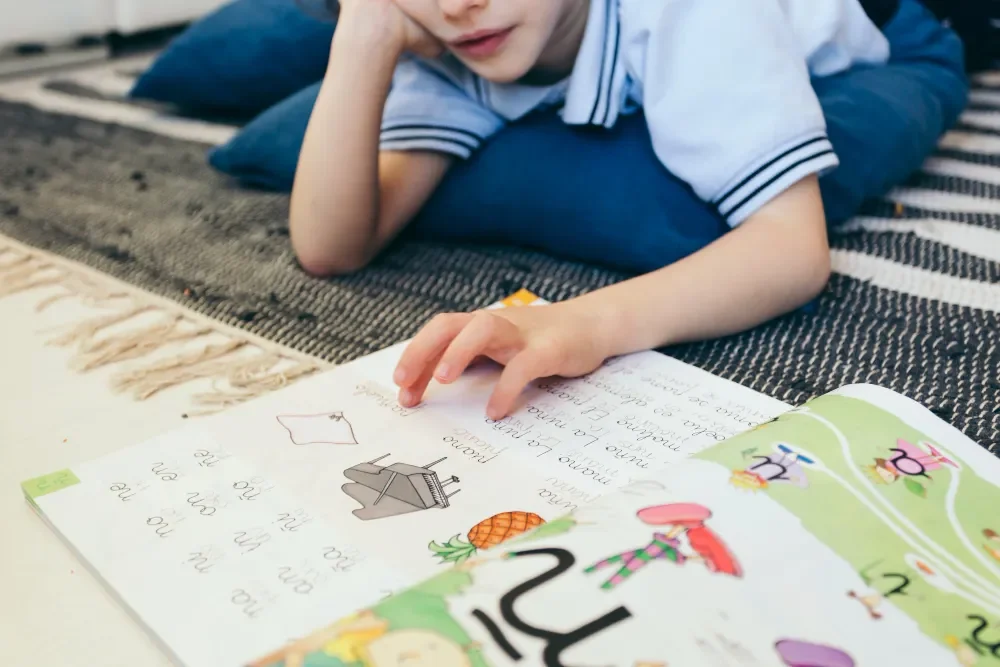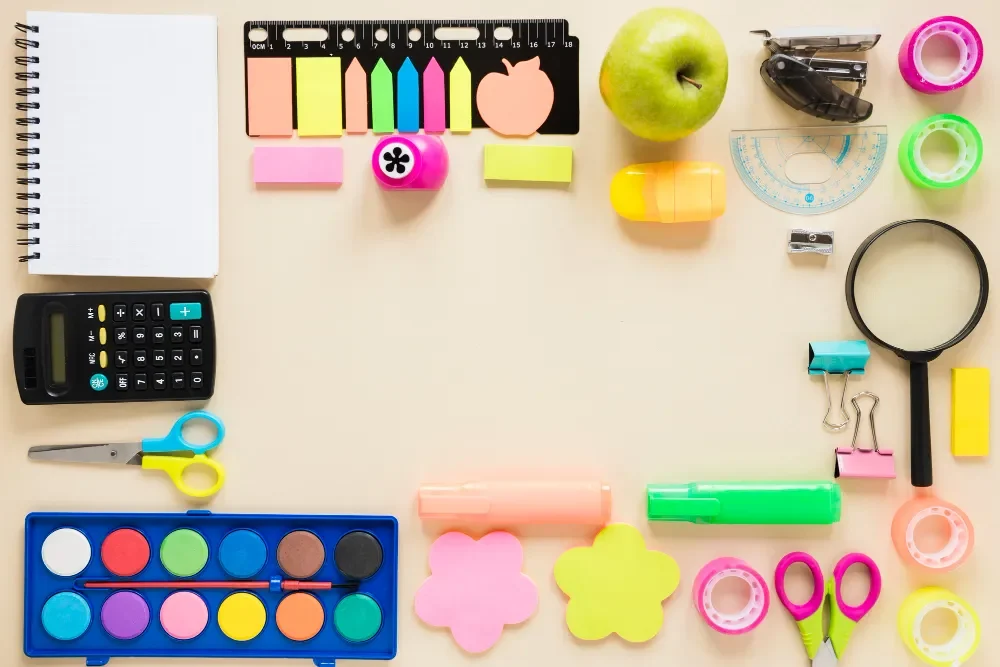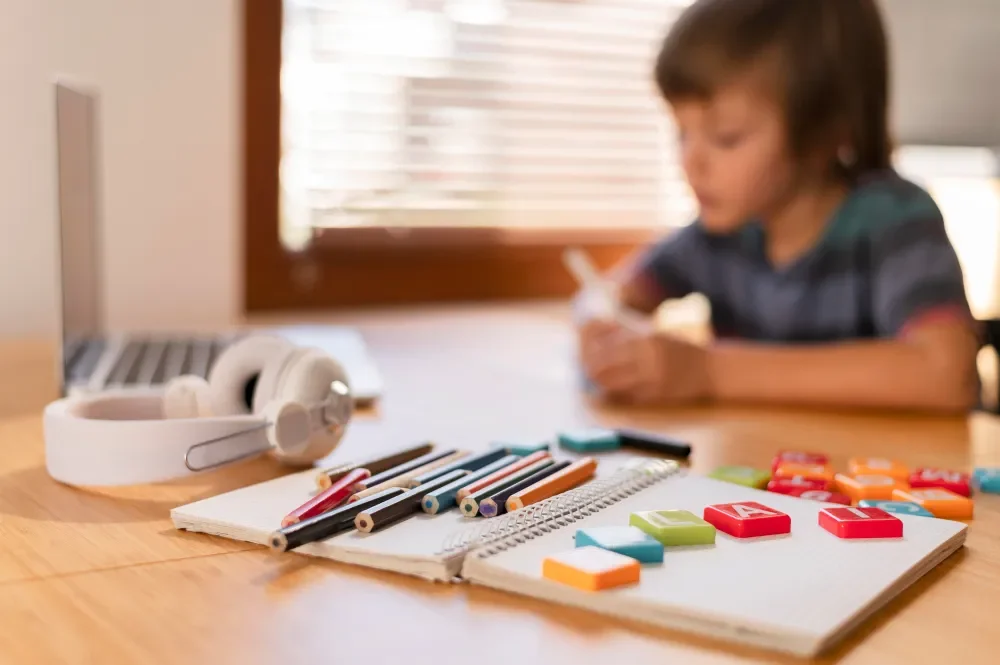Imagine this: It’s 7:30 a.m., you’re juggling coffee in one hand and a toddler’s shoe in the other, while your preschooler bounces off the walls asking, “What are we learning today?” Sound familiar? You’re not alone. More parents than ever are choosing preschool at home to give their little ones a strong educational foundation—without the chaos of drop-offs, pick-ups, or rigid schedules.
The beauty of a preschool at home curriculum? It fits your life. Whether you’re a work-from-home parent, a stay-at-home caregiver, or simply seeking more control over your child’s early learning, this guide will walk you through everything you need to create a joyful, effective homeschool preschool experience—even on the busiest days.
Let’s dive in.
Why Choose Preschool at Home? The Real Benefits for Busy Families

Preschool isn’t just about ABCs and 123s. It’s about building curiosity, confidence, and a love for learning that lasts a lifetime. But traditional preschool isn’t always feasible. Long commutes, high tuition, or health concerns can make preschool at home the smarter choice.
Take Sarah, a full-time graphic designer and mom of two. She tried enrolling her 4-year-old in a local preschool, but the 45-minute daily commute ate into her work hours. Instead, she built a simple homeschool preschool routine at home. Within weeks, her daughter was reading sight words—and Sarah was saving over $800 a month.
Here’s why preschool at home works:
- Flexibility: Start at 9 a.m. or 2 p.m.—whatever fits your family.
- Personalization: Tailor lessons to your child’s interests (dinosaurs one week, space the next).
- Cost-Effective: No tuition, uniforms, or fundraising bake sales.
- Stronger Bonding: You’re your child’s first and best teacher.
Ready to get started? Let’s build your curriculum from the ground up.
Building Your Homeschool Preschool Foundation: What to Teach

A strong preschool at home curriculum focuses on six core areas:
- Language & Literacy
- Math & Logic
- Science & Discovery
- Creative Arts
- Social-Emotional Skills
- Physical Development
You don’t need a teaching degree—just consistency and enthusiasm. Let’s break it down with lesson plans you can adapt in minutes.
Language & Literacy: Talking, Reading, Writing
Goal: Build vocabulary, phonics awareness, and a love for stories.
Daily Routine Ideas:
- Morning Read-Aloud (10 mins): Pick one picture book. Ask, “What do you think happens next?”
- Letter of the Week: Focus on one letter sound. Use toys (e.g., “B is for Bear!”).
- Name Tracing: Write your child’s name in highlighter; let them trace with a crayon.
Real Example: When 3-year-old Mia refused to sit for stories, her mom turned reading into a game. They acted out The Very Hungry Caterpillar with fruit props from the kitchen. Within a month, Mia was “reading” the book by memory.
Math & Logic: Counting, Patterns, Problem-Solving
Goal: Develop number sense and critical thinking.
Quick Activities:
- Snack Math: “How many crackers do we need for three people?”
- Pattern Play: Use colored blocks to make ABAB patterns.
- Shape Hunts: “Find something round in the living room!”
Pro Tip: Use everyday moments. Waiting in line? Count ceiling tiles. Cooking? Measure flour.
Science & Sensory: Exploration and Wonder
Goal: Spark curiosity through hands-on discovery.
Simple Experiments:
- Sink or Float: Test toys in the bathtub.
- Color Mixing: Use food coloring in water jars.
- Nature Walks: Collect leaves; sort by size/color.
Hypothetical Scenario: Imagine your child asks, “Why is the sky blue?” Instead of Googling, grab blue and yellow paint. Mix them to make green. Then explain light waves in simple terms. Science made memorable.
Your Step-by-Step Daily Routine for Preschool at Home
Consistency beats perfection. Here’s a flexible daily routine that works for busy parents:
| Time | Activity | Duration | Notes |
|---|---|---|---|
| 8:00 AM | Breakfast + Table Talk | 20 mins | Ask open-ended questions: “What should we explore today?” |
| 8:30 AM | Morning Circle Time | 15 mins | Calendar, weather, song of the day |
| 9:00 AM | Focused Learning Block | 20–30 mins | Rotate: literacy, math, science |
| 9:30 AM | Snack + Free Play | 15–20 mins | Outdoor time if possible |
| 10:00 AM | Creative Arts or Sensory | 20 mins | Painting, playdough, music |
| 10:30 AM | Physical Activity | 15–20 mins | Dance party, obstacle course |
| 11:00 AM | Storytime + Wind Down | 15 mins | Cozy reading nook |
| 11:30 AM | Lunch + Clean-Up | 30 mins | Involve kids in setting the table |
Adapt as needed. On hectic days, combine blocks. On weekends, go on field trips (zoo, library, park).
Preschool Tip: Keep a “Learning Basket” with 3–5 rotating activities. Swap weekly to maintain excitement.
Ready-Made Lesson Plans for the Entire Year

You don’t have to reinvent the wheel. Here’s a 12-month homeschool preschool framework:
Fall (September–November)
- Themes: Apples, Pumpkins, Leaves, Community Helpers
- Sample Week (Apples):
- Monday: Apple taste-test (red, green, yellow)
- Tuesday: Count apple seeds
- Wednesday: Paint with apple stamps
- Thursday: Read Ten Apples Up on Top
- Friday: Visit an orchard (or watch a virtual tour)
Winter (December–February)
- Themes: Winter Animals, Snow, Emotions, Kindness
- Sample Activity: Build a “feelings chart” with photos of your child showing happy/sad/angry.
Spring (March–May)
- Themes: Plants, Bugs, Weather, Transportation
- Science Focus: Plant beans in a clear cup; watch roots grow.
Summer (June–August)
- Themes: Ocean, Space, Dinosaurs, Ice Cream
- Outdoor Learning: Set up a water sensory bin with toy sea creatures.
Downloadable Bonus: Create a free printable calendar with themed stickers. Kids love checking off completed days.
Essential Tools & Resources for Preschool at Home

You likely already own 90% of what you need. Here’s a starter kit:
Must-Haves (Under $50 Total)
- Dry-erase board + markers
- Construction paper
- Child-safe scissors
- Playdough (homemade recipe: flour, salt, water, cream of tartar)
- Library card (free books!)
Digital Helpers
- YouTube Channels: Super Simple Songs, Cosmic Kids Yoga
- Apps: Khan Academy Kids (free), Epic! (digital library)
- Printables: Sites like Preschool Mom or 123 Homeschool 4 Me
Preschool Tip: Rotate toys weekly. A “new” toy feels exciting—even if it’s been in the closet for a month.
Overcoming Common Challenges in Homeschool Preschool

Let’s be real—preschool at home isn’t always rainbows and glitter. Here are the top hurdles and how to jump them.
Challenge 1: “My Child Won’t Sit Still!”
Solution: Ditch the chair. Use movement-based learning. Count jumps. Spell names with sidewalk chalk. Learning happens in motion.
Challenge 2: “I’m Not Creative Enough.”
Solution: Follow the child’s lead. If they love trucks, make everything truck-themed. Read Goodnight, Goodnight, Construction Site. Count truck wheels. Draw truck tracks in shaving cream.
Challenge 3: Sibling Interruptions
Solution: Create “big kid” tasks for older siblings (e.g., “You’re the official photographer today!”). Or set up parallel play stations.
Myth: “Preschool at Home Requires Fancy Materials”
Truth: A cardboard box becomes a spaceship, a castle, or a car. Creativity > curriculum kits.
Advanced Tips: Taking Your Preschool at Home to the Next Level
Once you’ve nailed the basics, level up with these strategies:
- Themed Learning Units Turn one interest into a month-long deep dive. Obsessed with trains? Study history (steam engines), geography (train routes), physics (how trains stay on tracks).
- Portfolio Assessment Skip grades. Document progress with photos, artwork, and voice recordings. “Here’s Johnny reading his first sentence—October 2025.”
- Co-Op Connections Join local homeschool preschool groups for park playdates or group field trips. Socialization without the classroom.
- Bilingual Exposure Introduce a second language through songs and labels. Stick “gato” on the cat toy. Effortless immersion.
- Parent Self-Care Burnt out? Swap “school” days with a friend. You teach her kids art; she teaches yours music. Win-win.
The Long-Term Payoff: Why Preschool at Home Matters
Children who experience rich, playful early learning:
- Score higher on kindergarten readiness assessments
- Show greater self-regulation and focus
- Develop stronger parent-child bonds
One study from the National Institute of Child Health found that children in play-based preschool at home programs outperformed peers in traditional settings in creativity and problem-solving by age 7.
Your effort today? It’s an investment in confidence, curiosity, and capability.
Conclusion: Your Preschool at Home Journey Starts Now
You don’t need a classroom, a degree, or endless patience to give your child an incredible preschool at home experience. You just need you—your voice reading stories, your hands building block towers, your encouragement when the playdough turns gray.
Start small. Pick one activity from this guide tomorrow morning. Watch your child’s eyes light up. Then build from there.
Your child’s education isn’t a race—it’s a relationship. And you’re already their favorite teacher.
Ready to begin? Grab a notebook, jot down your first week’s plan, and let the adventure unfold.
Frequently Asked Questions (FAQs)
How much time should I spend on preschool at home each day?
1–2 hours of structured activities is plenty for ages 3–5. The rest is learning through play, chores, and conversation.
Do I need to follow a strict curriculum for homeschool preschool?
No! Use themes and interests as your guide. Flexibility keeps it fun for both of you.
What if my child refuses to participate in lesson plans?
Follow their lead. If they resist circle time, turn it into a puppet show or dance party. Engagement > compliance.
Can I do preschool at home if I work full-time?
Yes! Focus on evenings, weekends, or “micro-lessons” (5-minute phonics games during breakfast). Quality over quantity.
How do I know if my child is learning enough?
Look for progress in skills like naming letters, counting to 10, or asking “why” questions. Celebrate growth, not perfection.







